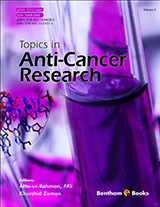Abstract
In the early 1940's, the US Food and Drug Administration (FDA) approved marketing of synthetic estrogens; non steroidal Diethylstilbestrol (DES) and Ethinylestradiol (EE) as well as Conjugated Equine Estrogens (CEEs) for medical purposes. High Dose Estrogen (HDE) therapy using DES and EE was introduced into the treatment of advanced breast cancer in postmenopausal women. Oral contraceptives (OCs) comprising EE were developed in the early 1960s and EE became a standard component of near all combined forms of contraceptive pills. Use of exclusively synthetic estrogens for both HDE therapy of breast cancer and contraception ensured a possibility for clear evaluations of the risks and benefits of synthetic hormone use. HDE therapy for breast cancer induced serious toxicity affecting near all organs, suggesting a genome-wide disturbance in cellular mechanisms. OCs comprising low doses of EE which may induce arterial and venous thromboembolic events and show ambiguous correlations with cancer risk at different sites by means of altered regulation of Estrogen Receptors (ERs). In contrast, for menopausal Hormone Replacement Therapy (HRT) both synthetic and natural estrogens extracted from biological samples were prescribed. Among postmenopausal women, the use of estrogens with different origin and even their combinations with synthetic progestins resulted in a chaos of quite controversial clinical experiences concerning the risks for arterial and venous thromboembolism and for cancers of breasts and endometrium. Analysis of the effects of specific HRT types in postmenopausal women justified that horse urine derived CEE without synthetic progestin is a highly beneficial formula against breast cancer, coronary heart disease and bone loss. The presented study reveals that an 80 year period of synthetic hormone prescription may be blamed for the misbelief that ERs exposed to elevated endogenous estrogen concentrations may be deregulated and drive cancer promoting changes. In tumors constitutively upregulating ER alpha expression, recent patents disclose amplifying ESR1 mutations.
Keywords: Antiestrogen, aromatase inhibitor, cancer treatment, estrogen receptor, estrogen paradox, ethinylestradiol, genomic stability, growth factor receptor, high dose estrogen therapy, hormone replacement therapy, oral contraceptives, synthetic estrogen, tamoxifen, tumor response.






















